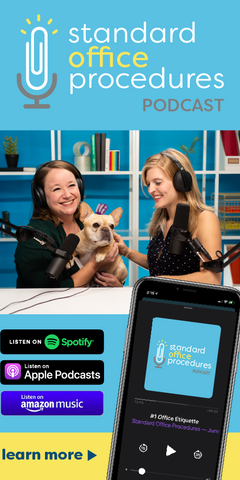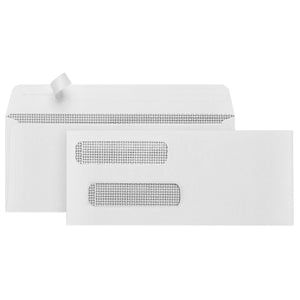On average, Americans spend about 38 hours a week working. Most of these hours are spent sitting and many of us spend ample time outside of work hours sitting as well. But the human body wasn’t designed to live a sedentary lifestyle. Spending so much time seated puts a lot of strain and discomfort on your back, builds tightness in your hips, and contributes to bad posture. If you aren’t careful with the way you sit, you can develop back pain that is not only uncomfortable but unhealthy. Finding the best office chair for back painis key to minimizing discomfort and helping you maintain a healthier lifestyle.
We’ve put together a resource to help you find the best office chair for your needs.
What’s the Best Office Chair for Back Pain?
If you’re looking for a quick answer to your office back pain needs, check out two of the best office chairs for back pain.
Our Overall Winner for the Best Office Chair for Back Pain

The Herman Miller Embody Chair
This chair is designed specifically to match the natural S-shaped curve of your back.
It’s easy to let your shoulders slouch into a rounded curve, but this curve causes unnatural strain on your body. Because this chair offers support for your lumbar spine (the area where your spine curves inward toward your body’s core, in your lower back), it really is the best office chair for lower back pain. You can purchase it through Amazon for $1,595.00.
While this is our overall winner for the best office chair for back pain, the price reflects the quality. Your body and health are important, but a chair at this price point may not be in the budget. We’ve got a few other options for you.
The Best Office Chair Under 200 Dollars

TOPSKY Mesh Computer Office Chair
In our opinion, this is a winner for the best office chair for back and neck pain. In addition to its lower back support for the lumbar spine, there is also a headrest. The headrest is narrower than the rest of the chair so it can support your neck. You can purchase it from TOPSKEY for $199.99
While these two top-rated office chairs for back painmay have answered all your backpain questions, fixing back pain is like a lollipop, you just have to keep licking to get to the center, and understand how to fix it.
Why Is It So Important to Keep Your Back Pain-Free?
Your back is the main support system of your body, it’s protective, and enables movement. Without keeping your back healthy, you’d lose most of your physical ability and potentially a lot of your sensory ability as well.

What Happens When You Sit?
While some may call sitting the disease of the 21th Century, the problem isn’t with sitting itself, but rather with sitting for so long. When you spend prolonged periods of time sitting, the muscles in your body begin to adapt. Your legs, core, and back muscles are never engaged, and so your body will slowly loose its strength. The pressure, that can normally be distributed more evenly through your body when standing or moving, is forced onto your spine for an extended time.
When your muscles aren’t regularly engaged, your body begins to build up stiffness. This will begin to limit the amount of physical activity you can and make daily tasks more difficult to complete.
On a psychological level,sitting decreases the breakdown of fat and insulin effectiveness and increases blood pressure and the potential for blood clots to form in your brain.
The Anatomy of the Spine
Your spine is made up the 4 sections. Each section has different sized discs, and a specific role in providing mobility and support
Cervical Spine – supports your skull and allows your head to rotate
Thoracic Spine – attaches to your rib cage, which protects your internal organs around your abdomen
Lumbar Spine – holds most the weight of your body and aids in hip and leg movement
Sacral Spine – connects the spine to your hip bone, forming the pelvis area

The lumbar spine is known for having the largest discs because it carries most of your body’s weight and provides mobility in your hips and legs. Your lumbar spine is susceptible to injury because it plays such a main role in body movement, and why you need to take care to keep it in good health.
Since the vertebrae protects the portion of your central nervous system which runs down your back, a back injury that causes any disruption to your nervous system can be detrimental to your sensory ability. Your brain uses your spine to conduct signals to the rest of your body. Without a path to travel down, your brain is unable to communicate with the rest of your body.
How to Fight Back Pain
Your back heath is important, but how can you implement a healthy lifestyle at your desk job? Like we mentioned before our bodies were never designed to live a sedentary lifestyle; our bodies were designed to move. So, here are some great ways to have a healthier lifestyle and decrease your potential for back pain.
Move More
Be more active both inside and outside of work. Create a consistent workout schedule, one that fits into your daily routine, even if it’s short. Take breaks during your workday to walk around and keep your blood flowing. Incorporate some stretching or yoga into your day.
The Best Stretches for the Workplace
- Standing Forward Fold – Begin with your legs hip width apart and your feet pointed directly in front of you. Keeping your back flat, bend at the hip and slowly lower your body down as far as you can without straining anything. Keep your head and neck aligned with your back and let them dangle downward. Hold this position between 10 and 15 seconds.
- Forward Fold at Desk – With a slight bend at the knees, place your hands flat on the edge of your desk. Keep your arms straight and your back flat as you continue to bend your knees. Stretch out your arms in front of you like they are pulling you forward to get the fullest back stretch. Hold this for about 10-15 seconds.
- Seated Hip Stretch – Sitting at the edge of your chair, cross your right ankle and rest it on your left knee. Keeping your back straight and your neck aligned, slowly lean forward at your hips until you feel a stretch along the backside of your hip. Hold this stretch for about 10-15 seconds. Repeat this with the left leg.
- Gentle Torso Twists – Sitting at the edge of your chair with your legs directly in front of you, place your right hand on the outside of your left leg. Without pressing your hand against your leg, gently twist your torso toward your left side and hold it for 10-15 seconds. Release and continue that stretch on the opposite side.
- Wrist Circles – Holding your right hand in front of you with your palm facing upward, place your thumb and index finger of the opposite hand on either side your wrist. Gently squeeze your wrist and circle your wrist clockwise for 5 to 8 rotations, and then circle it in the opposite direction. Be sure to do this with the opposing wrist as well.
Be careful with these workouts. If your body isn’t used to stretching, you can injury yourself. Gradually work your way up to daily stretching and make sure all your movements are slow and gentle.
Try a Standing Desk
Purchasing a standing desk is another good option to keep yourself from sitting all day. Alternating between sitting and standing gives your back a break from pressure built up from either position. Check out our resource on standing desks to find the best desk for you.
Strength Training
Bad posture curves your shoulders and puts extra pressure on your lower back. Bad posture is often due to having weak core and back muscles. Do some strength training to build stronger muscles in these areas. This way, your muscles will have the stamina to hold good posture and keep your back correctly aligned for the duration of your workday.
Visit a Chiropractor
Schedule regular appointments with a chiropractor. Chiropractors manipulate your spine to relieve pent-up stress and pressurefrom sitting at a desk all day. Relieving pent-up pressure can be difficult to do on your own, so going to see a chiropractor might be the best decision for you.
Incorporating these activities into your workday is the best option for relieving back pain, but movement is only half the battle. Regardless of how much you move, if you’re spending any portion of your day sitting down, you need to look into the best office chairs for back pain.
What Makes the Best Chair for Back Pain?
There are a lot of factors to consider when choosing the best desk chair for back pain.
- Firstly, don’t choose a chair with a straight back. Find a chair with a forward curve where your lower back will be, so it encourages and supports the natural curve of your spine and reduces stress on your lower back.
- Adjustability is key. Everyone is different, so a certain height for one person might not be ideal for another. Adjustable qualities allow you to make the necessary changes to fit the needs of your back.
- Armrests are a must. Without armrests, you’ll be putting extra stress and strain on your neck and shoulders which can result in upper back pain.
Top-Rated Office Chairs for Back Pain
These are the most affordable office chairs for back pain. These chairs are designed to provide proper support, so that your back can easily hold its natural positioning. So, pick a chair that will combat your specific area of pain.

Best office chair for neck pain
This chair has an adjustable headrest which gives you the most comfortable and much-needed support for your neck.

Best office chair for upper back pain
Duramont Ergonomic Office Chair, $329.99
This chair has adjustable armrests. Keeping your armrests parallel with your desk is important to relieve unnecessary strain on your arms and wrists. This pain can contribute to upper back and shoulder pain.

Best office chair for lower back and hip pain
Alera ALEEL42ME10B Elusion Series Mesh Mid-Back Multifunction Chair, $169.35
This office chair has an adjustable seat you can tilt forward or backward to relieve hip stress. The curved-in shape of the chair’s back also provides support for your lumbar spine.

Best office chair for lower back pain
Mysuntown Office Mesh Chair, Ergonomic Task Chair, $299.99
This chair supports your lower back in its natural positioning, relieving lower back pain. Most back pain can be traced to lack of lumbar spine support, so picking a chair with lower back support can be a gamechanger for back pain.
The Best Pillow for Back Pain
If you don’t want to splurge on a new office chair, you can always purchase a pillow designed for lumbar support. A back pillow can accomplish the same goal of avoiding back pain while sitting in office chairas a new chair would. XTReme comfortsprovides the best pillow for back pain at work. This cushion provides lower back support and correct spine alignment to eliminate your back pain.
Couple any one of these chairs with some exercises, stretches, and any of our other recommendations, and you’ll be on the road to less discomfort.

Finding the Best Ergonomic Office Chair for Back Pain
An ergonomic office chair is made to promote good posture which helps reduce back pain. Since the average American spends over six and a half hours sitting down, ergonomic office chairs are designed to give the most support to accommodate our sedentary habits.
What Makes A Chair Ergonomic?
Ergonomic is defined as fitting the needs of the user with efficiency, productivity, and minimal discomfort. For chair to be labeled as ergonomic, it must include a several factors.
- Seat height/depth adjustability – Your feet should be flat on the ground, and your knees should be bent 90°. If your seat isn’t adjustable, your feet may dangle and put unnecessary strain on your back, or your back may not get adequate support.
- Backrest height/angle adjustability – Unless you have an office chair made custom for your height, chances are you’ll need to adjust so your back can match the curve of the chair. Adjusting the angle is important, too, to avoid building pressure in one part of your spine.
- Armrest adjustability – Your arms should be parallel to the ground to avoid strain in your neck and shoulders. Having adjustable armrests will make this possible regardless of your height and the height of your desk.
- Headrest adjustability – Having a headrest will keep your neck from getting too stiff and will keep it in line with the rest of your back.
- Back tilt tension – Having reliable tension allows your back to rest without the chair’s tilt changing. You might need to adjust your chair’s back tilt tension based on your height and weight.

The Best Ergonomic Office Chair for Back Pain
Komen Ergonomic Mesh Office Chair, $319.00
This is the best ergonomic office chair for lower back pain, since it has an s-shaped curve that keeps your back into proper positioning.
Other Contributing Factors to your Back Pain
Keep your chair close to your desk. The bend at your elbow should be 90°and your arms should have plenty of support. If your arms are angled too high, too low, or stretched too far forward, it will increase strain on your upper back and your shoulders.
Align your monitors with your eyes. Try to keep your monitors directly in front of your face so your neck can stay at a neutral angle and won’t have to strain to look up, down, or sideways for hours at a time.
Sitting for eight hours a day, five days a week doesn’t suddenly skyrocket your chances of spinal damage. However, making sure your spine is well protected and taken care of is still very important. But reducing your back pain doesn’t come with just buying the best chair. For the best results incorporate more exercise, more movement, and a good office chair into your life.
Best Chairs for Back Pain at Home
Just because most of your sitting happens at the office doesn’t mean you leave behind your back pain when you leave. More than likely, you’ll need a good chair at home to continue healthy back habits. Recliners are the best chairs for back pain at home. Here are a couple we would recommend.
- La-Z-Boy Anderson Reclina-Rocker Recliner, $479.23
- DaVinci Piper All-Purpose Upholstered Recliner and Swivel Glider, $329.00

If you have any more questions, be sure to ask– Larry loves question! And don’t forget to follow us on Facebook, Instagram, and Twitter.
 For more informative articles about office supplies, subscribe to our email newsletter!
For more informative articles about office supplies, subscribe to our email newsletter!
Never fear, you won't begin receiving daily sales emails that belong in a spam folder. Instead, we promise a fun weekly roundup of our latest blog posts and great finds from across the web. And if you lose interest, it's always easy to unsubscribe with a single click.










